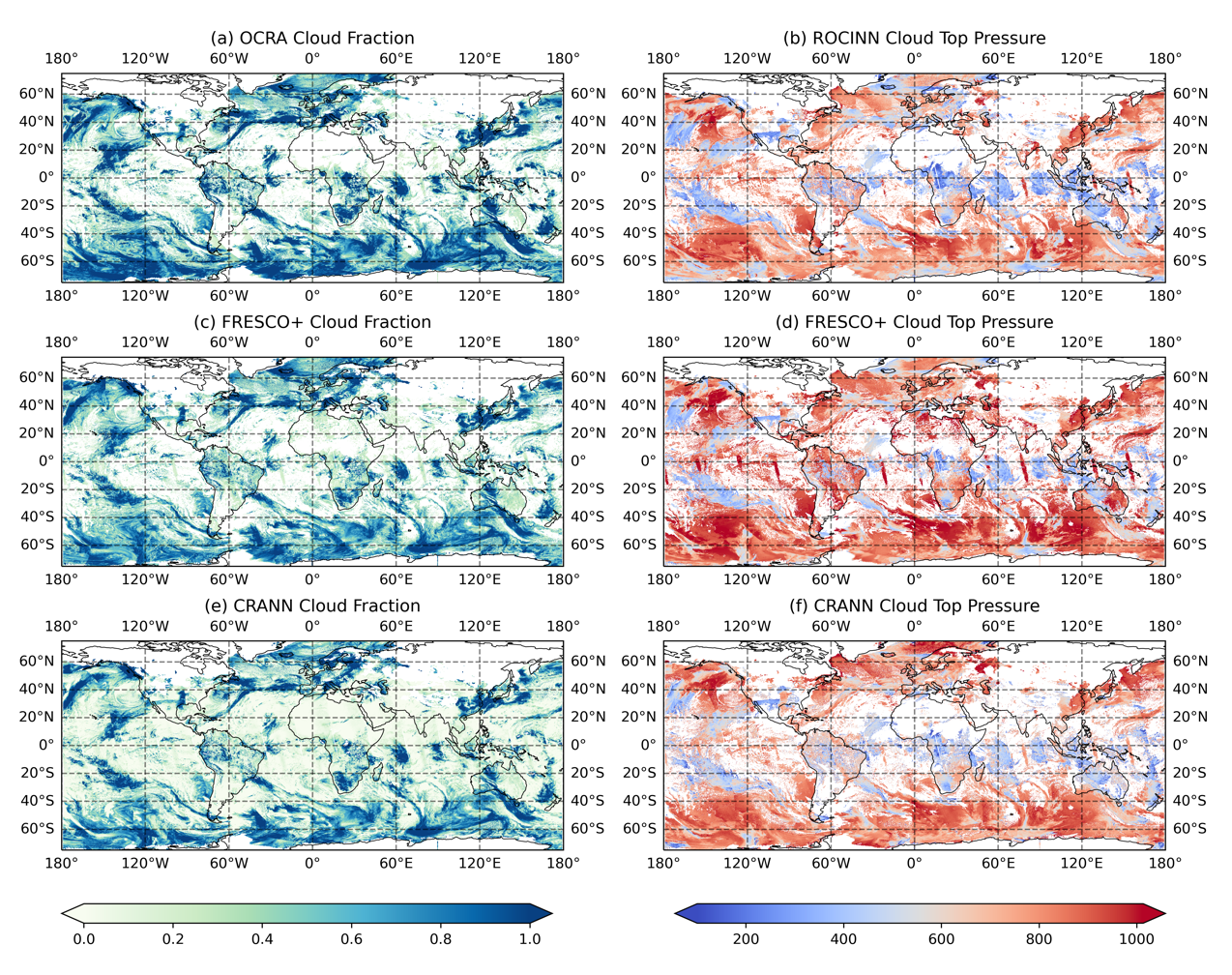Novel Cloud Monitoring Algorithm Promises Enhanced Accuracy
Jul 12, 2024
Researchers led by Professor HUSI Letu at the Aerospace Information Research Institute (AIR), Chinese Academy of Sciences (CAS), have developed a novel algorithm for measuring cloud property using neutral networks. The algorithm, known as CRANN (Cloud Retrieval Algorithm based on Neural Networks), focusing on retrieving cloud fraction and cloud-top pressure from hyperspectral measurements in the O2-O2 band. The findings were published in the journal Remote Sensing of Environment.
The algorithm is part of the broader CARE (Cloud Remote Sensing, Atmospheric Radiation and Renewal Energy Application) algorithms and is set to be integrated with China’s new-generation hyperspectral instrument, Ozone Monitoring Suite (OMS). This collaboration with the National Satellite Meteorological Center of the China Meteorological Administration aims to enhance the accuracy of cloud property measurements, crucial for improving trace gas retrievals from satellite data.
Clouds cover significant portion of the Earth’s surface, impacting both the climate and the accuracy of satellite monitoring of trace gases and land surfaces. Accurately characterizing clouds is crucial mitigating these impacts.
The conventional methods for retrieving cloud properties have struggled with efficiency due to the higher spectral resolution and increasing spatial resolution of modern hyperspectral instruments. Existing satellite monitoring instruments like OMI (Ozone Monitoring Instrument), OMS (Ozone Monitoring Suite), TEMPO (Tropospheric Emissions: Monitoring of Pollution), and GEMS (Geostationary Environmental Monitoring Spectrometer) do not capture data from the O2-A band, which complicates the use of existing retrieval algorithms like FRESCO+ and ROCINN that are specifically developed based on O2-A band observations.
The new CRANN algorithm addresses these challenges by combining a physical radiative transfer model with machine learning technique. The research team trained the physics-driven neural network models using a simulated dataset generated by radiative transfer model, resulting in better performance compared with traditional methods.
When tested against official algorithms like OMCLDO2, FRESCO+ and ROCINN, the CRANN model demonstrated comparable performance. For OMI and TROPOMI observations, the correlation coefficients between CRANN results and those from official algorithms were notably high, indicating strong agreement.
“The CRANN method provides a powerful tool for satellite-based cloud monitoring. Its high accuracy, efficiency, and robust performance across various scenarios make it a promising technology for future atmospheric studies,” said Prof. Husi Letu at AIR.

Cloud fraction and cloud top pressure retrieval results from CRANN,FRESCO+ and TROPOMI official products OCRA/ROCINN (Image by AIR).
Contact: luyq@aircas.ac.cn



News & Events